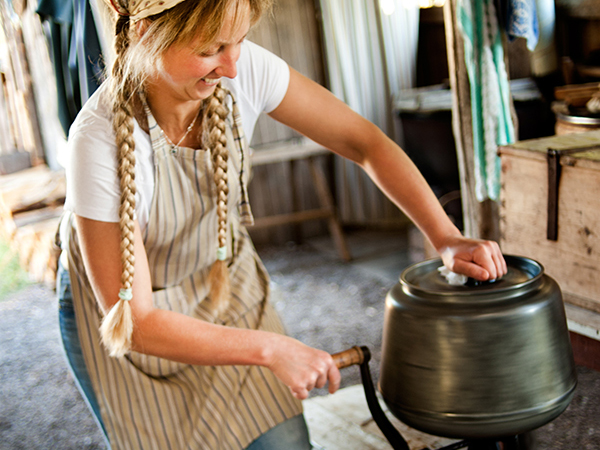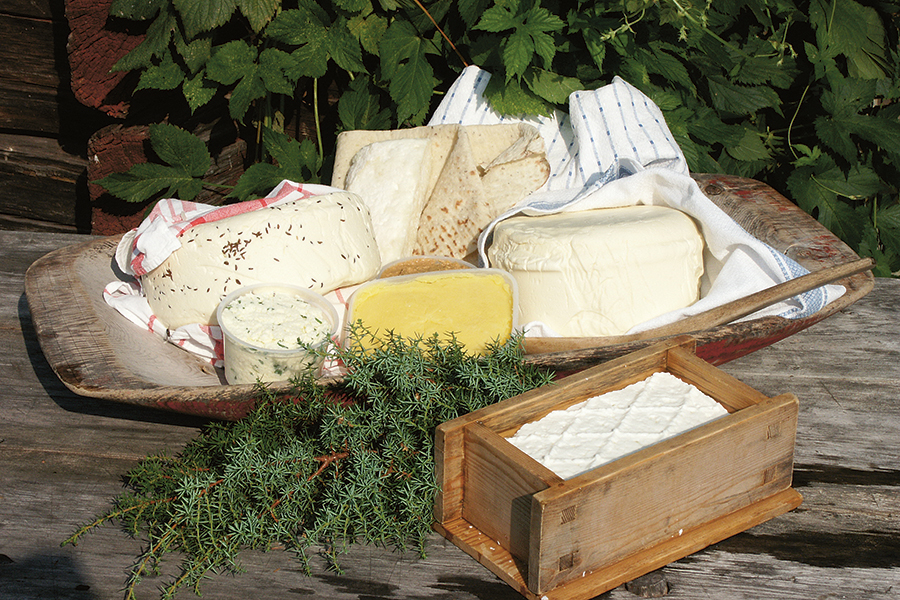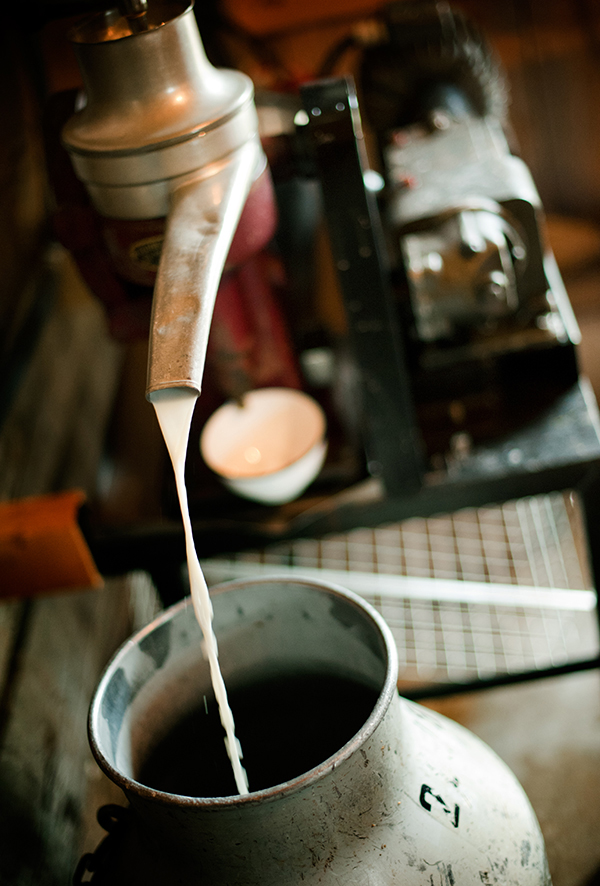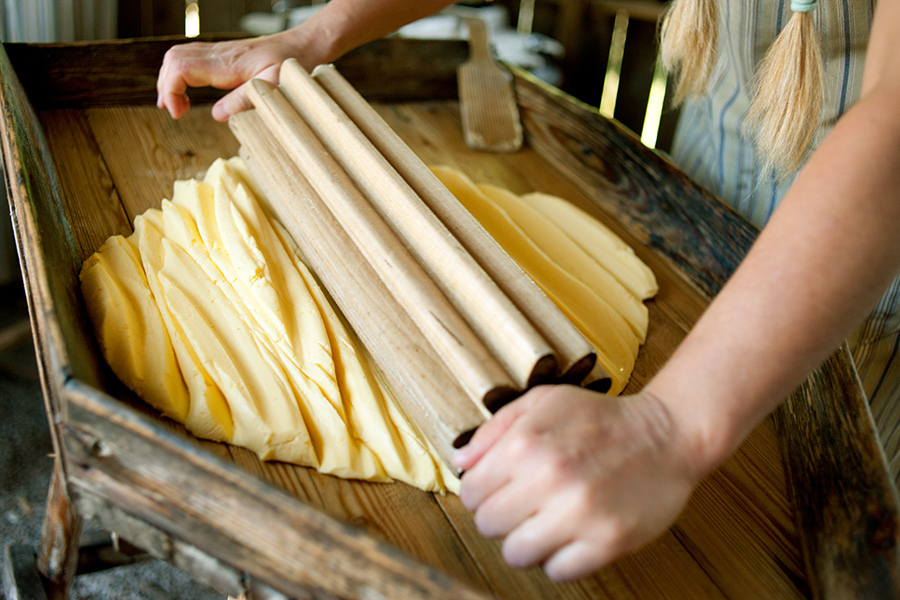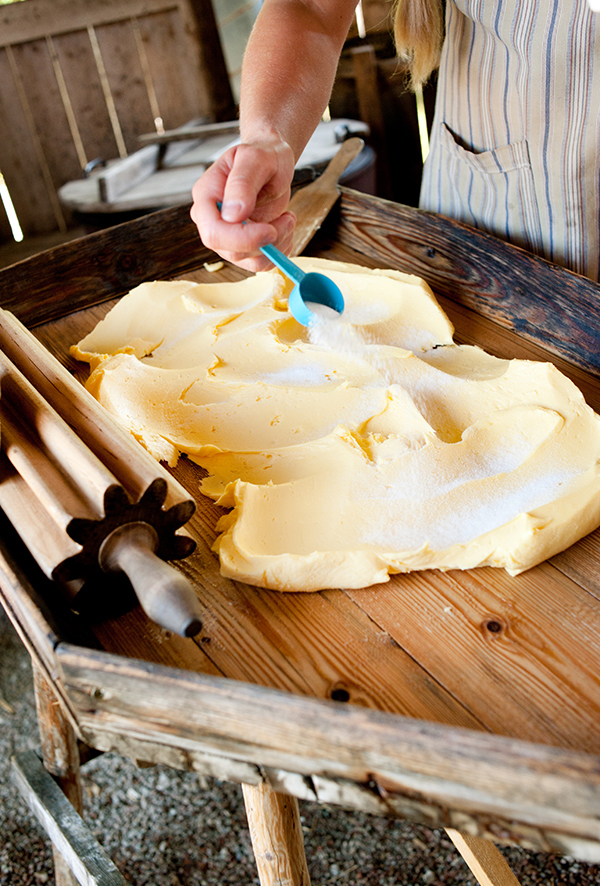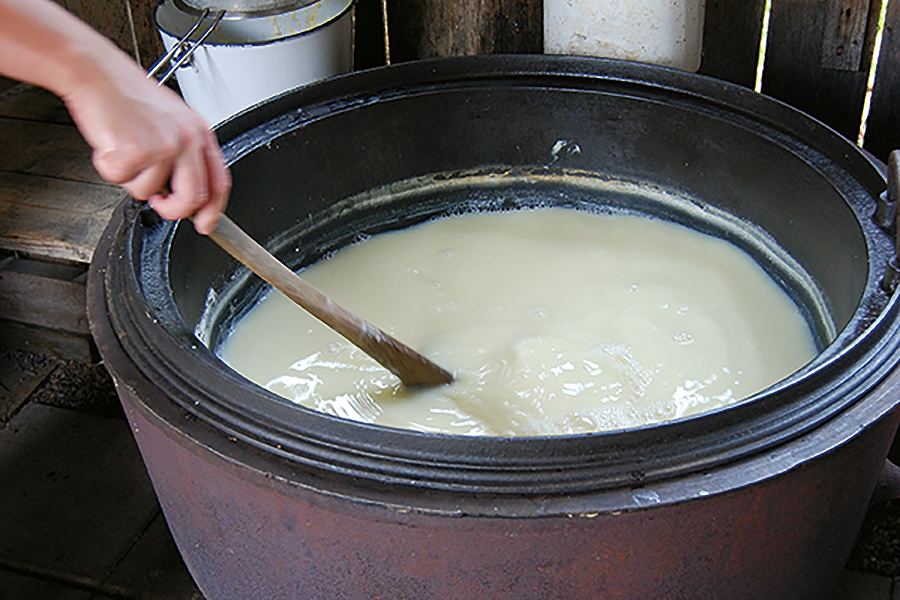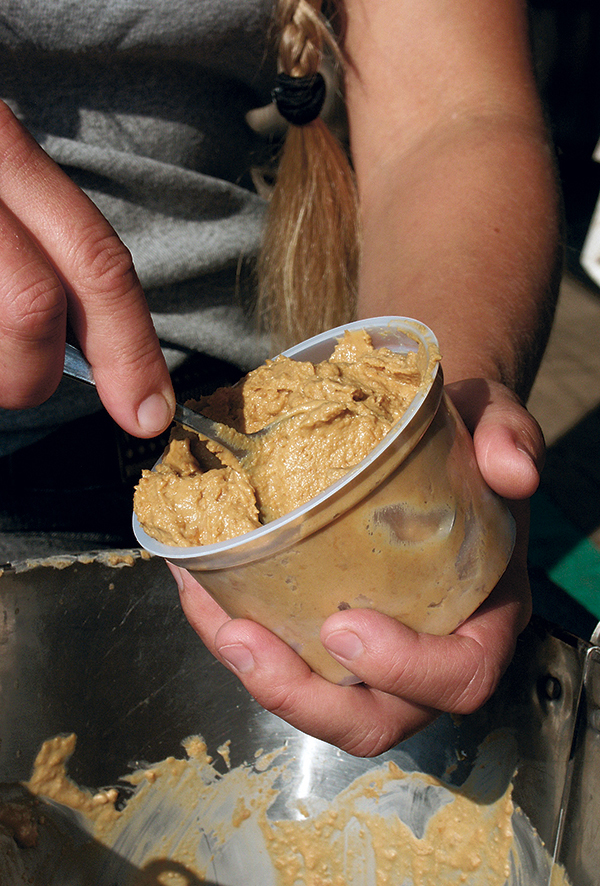Production
So we milk twice a day, morning and afternoon. A cow starts producing milk when she has her first calf, usually at the age of 2, and then she is milked for about 10 months. After the milking period, the cow is given a “holiday” for two months; this time is called the non-lactation period. Then it’s time for a new calf, and the circle continues.
The milk is the basis of the shieling’s activities and products and it is important that it is properly managed to ensure good quality. First, the udders of the cow are thoroughly cleaned. This serves two purposes: First, it keeps the udder clean and prevents dirt in the milk, and second, it stimulates the cow to release the milk.
All the teats are milked a little by hand to check that the milk is nice and fresh. Then it’s time to turn on the milking machine, which collects the milk in a bucket. When milking is complete, the milk is poured through a sieve before being curdled.
There are 8-10 dairy cows on the farm, and they produce about 130 litres of milk per day. It is used to make cheese, butter and whey butter, which is then sold to the visitors.
The cheeses
When the milk comes out of the cow’s udder, it is around +38 C. The first step is to add rennet, an enzyme that causes the milk to coagulate. Rennet is obtained from calf and cow stomachs, the so-called abomasum. In the old days, parts of the calf’s stomach were added to milk to coagulate it, but now rennet is produced chemically. The milk is left to sit for about 30 minutes at 32-34 degrees, before cutting the curd into small cubes and stirring. The curd is allowed to rest a bit before stirring again. As you stir the curd, the whey is released and the cheese cubes become more and more firm in texture. The whey is scooped out and after about 1.5 hours the curd can be filled into cheese moulds. The cheese you now have is called whole milk cheese. It is a fat cheese that is seasoned with caraway or garlic. In the past, this cheese was only made for special occasions, but now it is also available as cellar stored cheese.
The cream in the milk was far too valuable and needed for butter production. Butter was a valuable commodity. The cheese that used to be made here at Karl-Tövåsen is a skimmed milk cheese. Once the milk has passed through the separator, an invention of the late 19th century that separates the cream from the skimmed milk, rennet is added to the milk. This cheese is left to ferment for longer and at a lower temperature. The curd is left to drain in wooden cheese moulds. Once the cheese has dried, it is placed in brine for 24 hours. The skimmed milk cheese can be enjoyed either fresh in a salad, like feta cheese, or aged as “Gammelost”. That cheese tastes great, but does not smell as good. Some of the milk is also used to make a kind of cottage cheese, also known as “Småost”. It is usually flavored with salt and chives.
The butter
The cream, which is produced when the milk is passed through the separator, is left to become sour for a few days. Once this is done, it’s poured into the churn and then it has to be stirred so that the cream separates into butter and buttermilk. Buttermilk is a sour milk with small lumps of butter and is great for baking.
Many people also appreciate it as a healthy drink. Now the butter must be washed clean from all buttermilk with cold clean water. This process takes a long time, and the water needs to be changed many times. After that the butter is salted and left to rest for 2 hours.
Before it is ready to serve, the butter is thoroughly blended so that it does not turn out streaky.
Did you know …
Butter won’t churn when there’s thunder in the air.
Mess Butter
Mess Butter is a product that is pretty unique to Sweden and Norway. You make mess butter by letting whey, a byproduct from cheesemaking, simmer on low heat for many hourse. While it is simmering, liquid evaporates and you end up with the milk sugar. You need a lot of wood to keep the right heat when making mess butter and preferably you need someone else with you to help stir the cauldron.
If you don’t stir evenly towards the end of the boil, the butter may burn. When the mess butter is finally done, you need to stir it cold or else it will crystallize and become grainy. The mess butter should not be subject to vibrations when it is cooling off, it has to sit on an even and steady surface.
Mess butter is subtle stuff!

